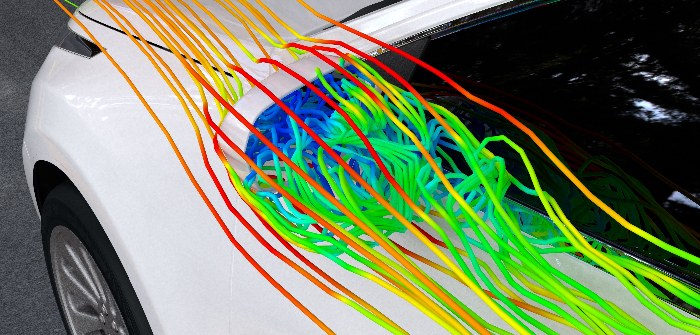US NHTSA is currently considering several areas for deregulation, including allowing cameras to replace rear-view and side mirrors on passenger cars. The mirror has long been an obstacle for car designers as they work ever harder to improve aerodynamics and reduce emissions.
According to simulations carried out by Exa Corporation, the drag caused by a pair of mirrors on a car, SUV or pickup typically ranges from 10-20 counts of drag (CD = 0.010 to 0.020). Removing them translates into improved aerodynamic efficiency of approximately 6%.
Advantages of removing wing mirrors also include wind noise reduction and more freedom for designers by opening up the area of the A-pillar normally dedicated to side mirrors.
Following the United Nations amendment to Regulation No 46 to include camera monitors as one of the permissible systems that must provide indirect vision to drivers, Japan became the first country to write the mirrorless car into law.
As other countries follow Japan’s example, car makers must consider how to turn a concept into a mass market reality. There will be significant cost and time implications for development teams working out the best way forward for the mirrorless car.
Exa has been helping car makers, like Tesla, develop aerodynamically efficient concepts without the need for expensive and time-consuming wind tunnel tests. Simulation-driven design, based on a form of CFD, enables designers and engineers to accurately predict performance of a design concept in a wide range of real world operating conditions as early as possible.
Aerodynamically efficient concepts can be developed in Exa simulation software without the need for expensive and time-consuming wind tunnel tests.


